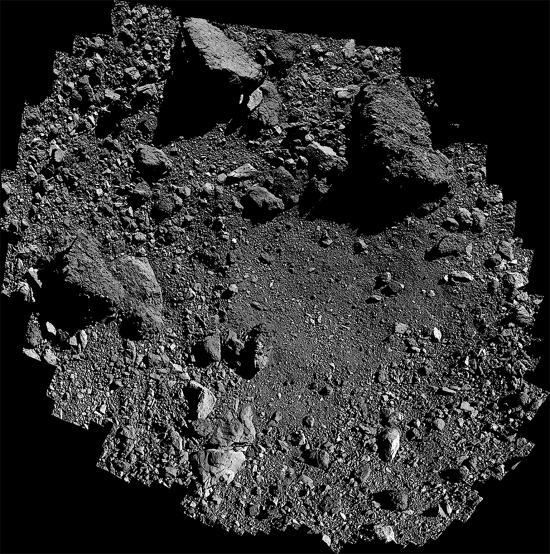
August 10, 2020
Origins-Spectral-Interpretation-Resource-Identification-Security-Regolith-EXplorer.
NASA launched Osiris-Rex on September 8, 2016. It is currently in orbit around 101955 Bennu, preparing to collect a sample of the asteroid’s regolith and then returning it to Earth. Bennu is among 7000 Near Earth Objects (NEO) that orbit the Sun.
Astrophysicists plan a manned-mission to a large asteroid at some time in the future, so they are looking at small ones in order to determine if electrical activity will be a problem for astronauts. It is ironic that NASA scientists are concerned about electricity on and around asteroids, since they normally do not acknowledge its presence.
One of the mission’s biggest surprises, so far, is the discovery of particle emissions from Bennu. According to Dante Lauretta, OSIRIS-REx principal investigator at the University of Arizona:
“The discovery of plumes is one of the biggest surprises of my scientific career. And the rugged terrain went against all of our predictions. Bennu is already surprising us, and our exciting journey there is just getting started.”
Many of the particles are accelerated clear of Bennu. They orbit the asteroid before returning to its surface. Planetary scientists exclude any electrical explanation – which rectifies the anomalies in other theories – because they know almost nothing about the forces involved, except to parrot: “if there’s electricity in space it doesn’t do anything.” It never occurs to them that electricity can create the very things they now struggle to understand.
The shallow craters, along with the sorted boulders, reminiscent of Itokawa, are important considerations in the theory of electrical effects. By thinking only in terms of meteor impacts, landslides and other familiar geological forces, NASA is ignoring the one possibility that makes all the disparate features they see cohesive: an electrically dynamic Solar System in its formative phases, when cosmic thunderbolts carved the surfaces of planets and moons.
As previously written, many of Comet Wild 2’s mineral constuents can form only at high temperatures. Astrogeologists wondered how something that was supposed to be a remnant from a nebular cloud could exhibit crystalline structures requiring a blast furnace to create. Anorthite, a compound of calcium, sodium, aluminum and silicate, and diopside, made of calcium, magnesium and silicate were found around Wild 2.
When the first Hayabusa mission finally made it back to Earth, there were more than a thousand fragments inside its collection capsule. The mission team was surprised to find silicates from Itokawa that had been exposed to temperatures in excess of 800 Celsius. Chondritic meteorites are also made of similar stuff. That can only mean that comets, asteroids, and meteoroids share a similar birth.
OSIRIS-REx will also briefly touchdown on Bennu to retrieve a sample of between 60 and 2000 grams, returning it to Earth on September 24, 2023. Final analysis of the sample will conclude in 2025. Predictions are that the material will be similar to that already collected from other locations.
Stephen Smith
The Thunderbolts Picture of the Day is generously supported by the Mainwaring Archive Foundation.












